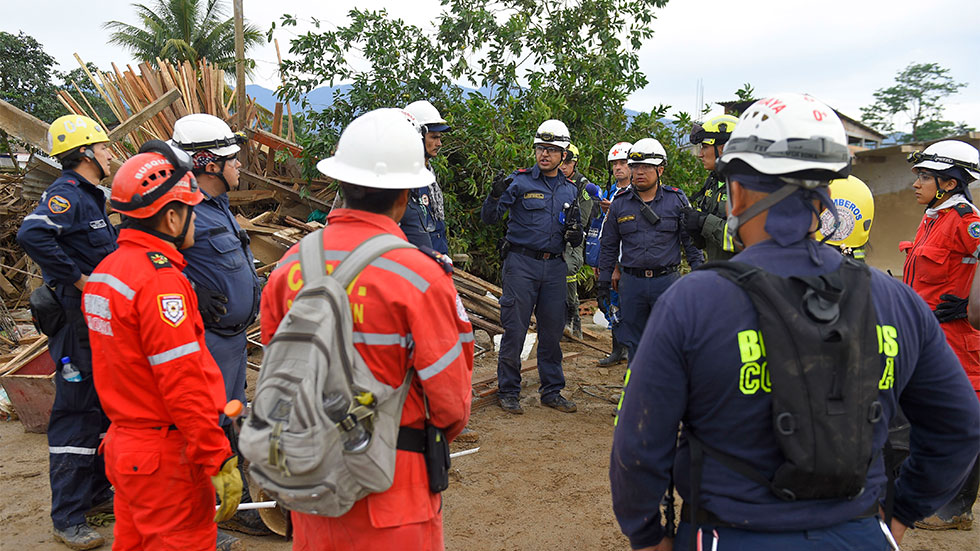Colombia President Juan Manuel Santos on Sunday announced plans on Sunday to rebuild the town of Mocoa in the aftermath of Saturday’s flooding tragedy, which has left between 254 and 283 people dead while 200 remain missing.
While announcing his reconstruction plans, Santos reiterated his condolences to the families of the victims and said that Colombia stands united behind the traumatized town.
“Today we have begun planning and organizing the reconstruction and rehabilitation of the city. We will support affected families in the recovery and improvement of their homes, and for those who lost their homes, we will build new ones, in lower risk areas,” said the president.
Santos also announced that all funeral expenses will be borne by the national government and, as he had announced hours earlier, confirmed an aid donation to each affected family of $6,500 dollars, which will be delivered to the victims through the Solidarity and Guarantee Fund (FOSYGA).
According to the President, the reconstruction of Mocoa will take approximately one year. Within which time economic activity should also begin to recover. To that end, the Colombian government has allocated $418 million dollars to support the reconstruction of businesses that were totally or partially destroyed.
Santos declares state of emergency as south Colombia disaster death toll rises
In the short term, the issues being given the highest priority are the removal of corpses still left in the mud, and the provision of water, electricity, healthcare and shelter.
With regards to water, 26 water trucks, each with the capacity to carry 410 thousand liters of potable water, arrived in Mocoa on Sunday evening. Motorized pumps and mobile water treatment plants have also been installed in three nearby rivers to guarantee a supply of drinkable water to the worst affected neighborhoods, reported newspaper El Espectador.
In health, the main challenge is preventing outbreaks of diseases among the victims because of the decomposition of bodies still buried in the rubble.
In light of this, Colombia’s Health Minister Alejandro Gaviria announced that 500 kilos of medicines and medical supplies had arrived on Sunday and that a vaccination campaign would begin on Monday.
The Mocoa – Pitalito highway has been partly operational again since Sunday with five of the seven bridges that were severely affected are already back in operation.
Regarding the service of electric power, also seriously affected by the avalanche, Santos said that there are already ten generators in operation to supply electricity to the inhabitants of Mocoa. The plants are only a temporary solution, and the President has charged the Ministry of Mines and Energy with rebuilding Mocoa’s energy service to be better than before.
Rescue workers continue to search for bodies amid the destruction as the authorities try to identify the hundreds of corpses already recovered.
In spite of the growing number of dead, the 200 figure of missing people has not gone down, increasing fears that more than 500 people could have lost their lives in Colombia’s biggest natural disaster in decades.


